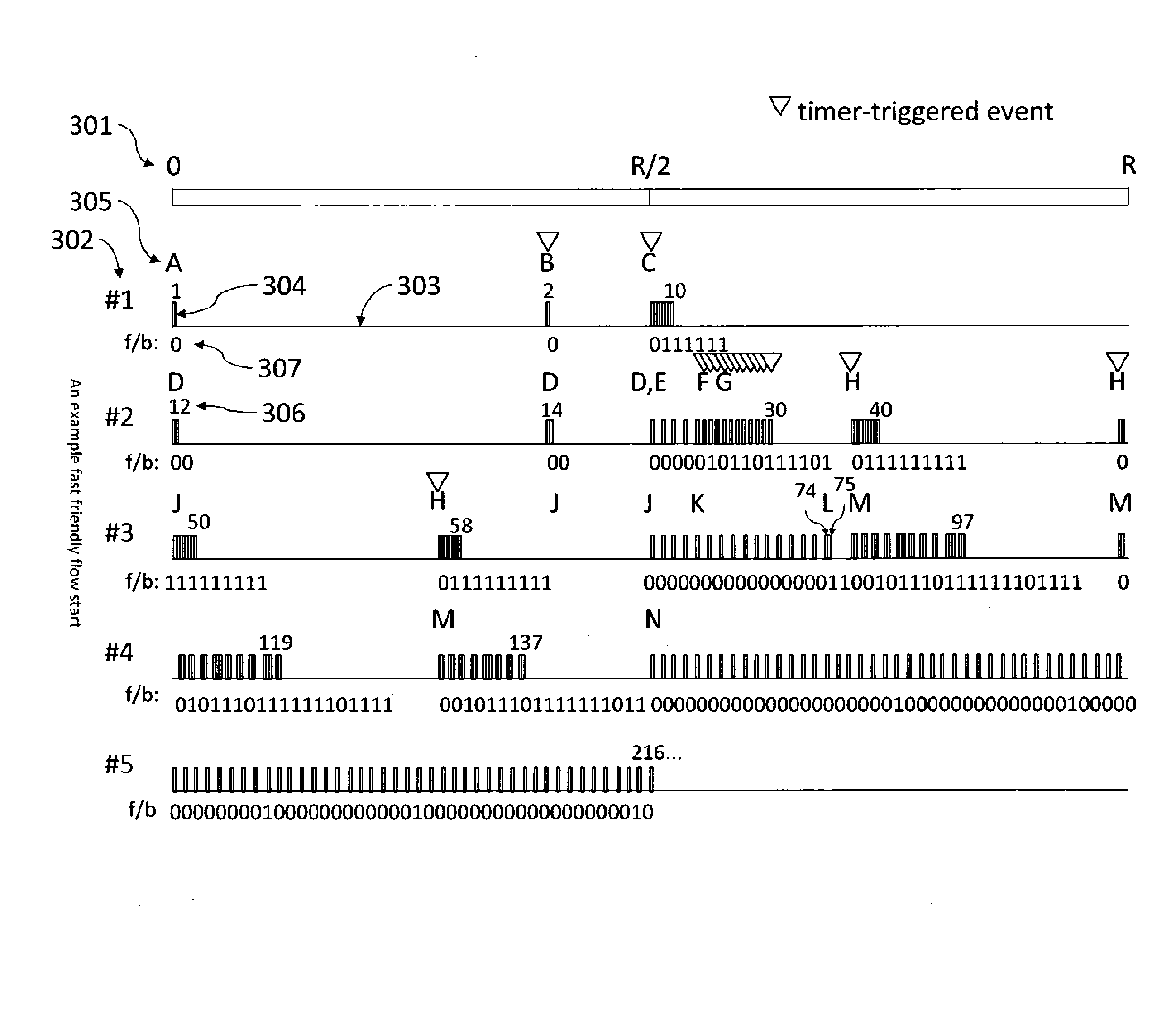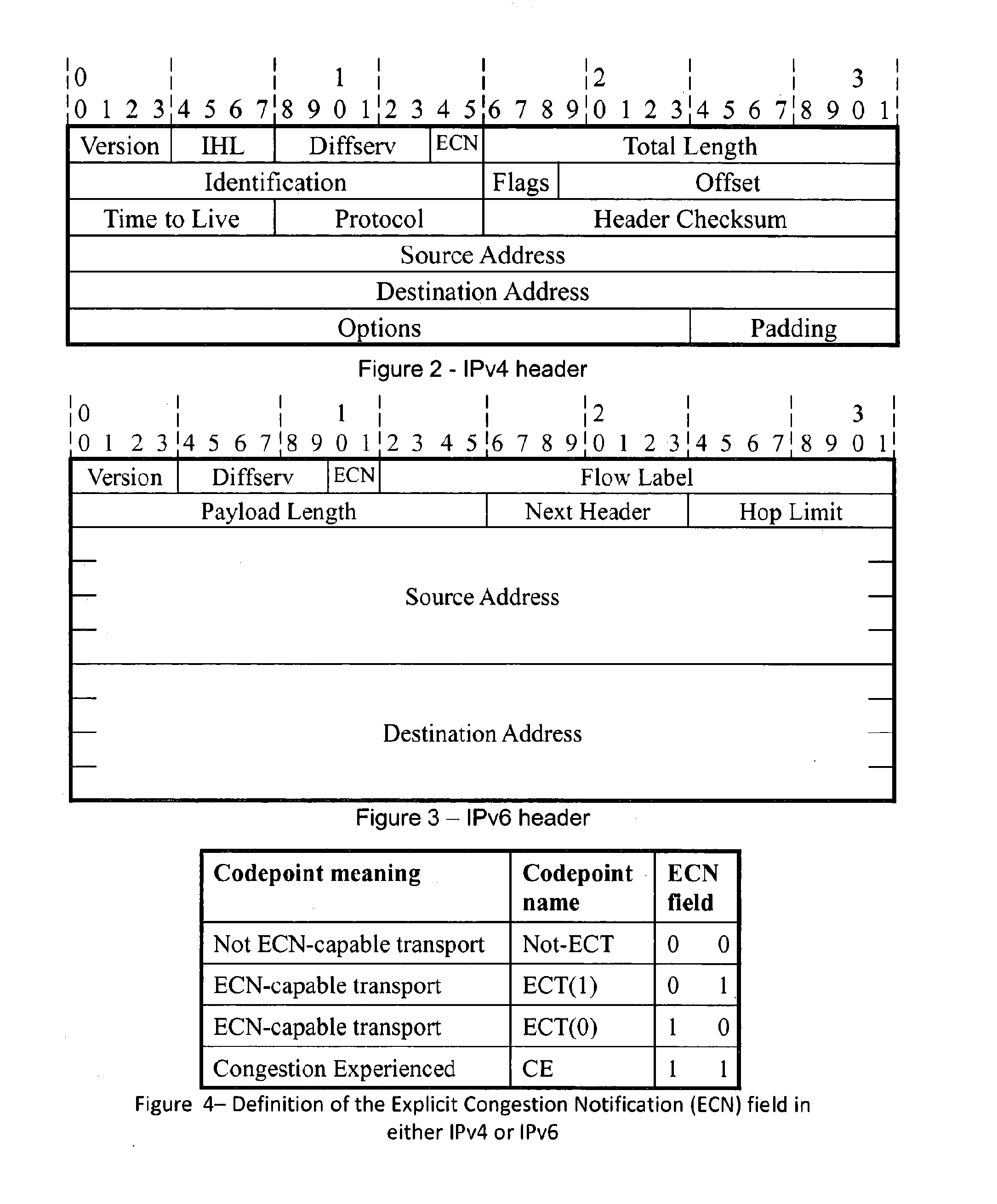Fast friendly start for a data flow
a data flow and fast technology, applied in the field of transmission rate adaptation, can solve the problems of difficult to argue whether one congestion window is better, data source faces a dilemma, and the choice of the number two for doubling and halving was fairly arbitrary
- Summary
- Abstract
- Description
- Claims
- Application Information
AI Technical Summary
Benefits of technology
Problems solved by technology
Method used
Image
Examples
Embodiment Construction
[0052]FIG. 1 shows a schematic diagram of a typical packet network (10). A sender (11) sends data packets along path (12) towards receiver (18). A sequence of routers forward the data packets along the path. The sender forwards them to a customer edge (CE) router, or source node, (13), which in turn forwards them to a provider edge (PE) router (14). Other senders (not shown) will typically be connected to the CE router and other CE routers (not shown) will typically be connected to the PE router. The PE router forwards the data packets to a core router, which in turn may forward them via one or more core routers towards a second PE router (16), which forwards them to the receiver via another CE router (17). It will be understood that the path from a sender to a receiver may pass through different numbers of routers to those depicted in FIG. 1.
[0053]Each router comprises a processor, a memory, a store for storing program modules and at least one buffer (20) for each outgoing interfac...
PUM
 Login to View More
Login to View More Abstract
Description
Claims
Application Information
 Login to View More
Login to View More - R&D
- Intellectual Property
- Life Sciences
- Materials
- Tech Scout
- Unparalleled Data Quality
- Higher Quality Content
- 60% Fewer Hallucinations
Browse by: Latest US Patents, China's latest patents, Technical Efficacy Thesaurus, Application Domain, Technology Topic, Popular Technical Reports.
© 2025 PatSnap. All rights reserved.Legal|Privacy policy|Modern Slavery Act Transparency Statement|Sitemap|About US| Contact US: help@patsnap.com



